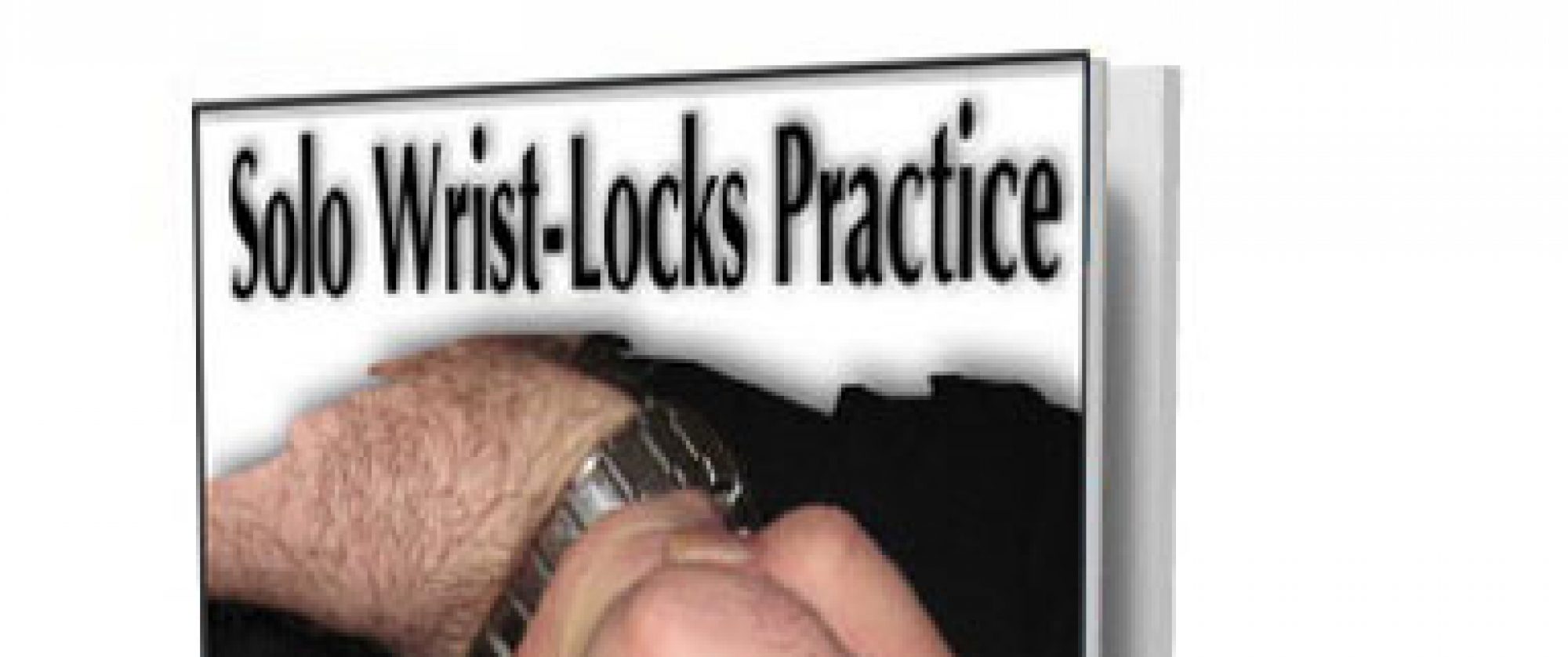If you train for practical application with your wrist locks, then eventually, you’re going to find yourself stuck in this “almost funny” situation.
Even though it can be humorous in a training situation, this both-punching-at-the-same-time problem is all too serious in a real fight. In the next few minutes, I’d like to describe both the response of the wrist locker and the responder. Then I’ll show you how this presents a serious problem in a real fight. And finally, I’ll give you a suggestion for solving the gridlock, potential double knockout problem.
Sound like a plan?
[headline_arial_small_left color=”#000000″]You Wrist Lock in the Middle of a Fight[/headline_arial_small_left]
Whether from a grab, as an attack in the middle of a fight, or an attempt to control someone attacking you, at some point you decide to effect a wrist lock or joint lock of some type.
As you snap on the joint lock, your opponent resists. He tenses his muscles and prevents you from causing pain at a joint. In other words, he tries to out-muscle you, as you attempt to control with a lock.
Are you with me, so far? What would you do at this point?
If you have followed my martial suggestions for any length of time, then you know that one option is for you to hit the instant you feel resistance. Lock … feel resistance … punch with your free hand … AND REAPPLY THE LOCK. 😉
So, you’re going to punch upon feeling the tensing of your enemy’s muscles in the wrist and forearm. Meanwhile …
[headline_arial_small_left color=”#000000″]A Practical Wrist-Lock Response[/headline_arial_small_left]
Another suggestion that you might have read in one of my books, ebooks, or blog posts … is to lash out with a quick punch, the minute you feel someone trying to joint lock you.
Imagine you’re the wrist locker from above. You’re wrist locking someone … you feel resistance, so you punch … EXCEPT … he is taught to punch as a response to your lock.
You might accidentally create a scenario where you both punch at the same time. And I’m sure you’ve seen the video clip where two MMA guys connect with punches at the same time, and knock each other out.
[features_box_green width=”75%” + border=”2px”]Note: I guess every wrist lock should come with a warning … you might end up on Youtube, both knocking and being knocked out at the same time. Shudder the thought.[/features_box_green]
The wrist lock seems to be the focal point, causing a martial gridlock. Agreed?
So, what do you do?
[headline_arial_small_left color=”#000000″]Wrist-Lock Punches Solutions[/headline_arial_small_left]
My first suggestion is to change angles. You still have ahold of his wrist. This means there is probably a way for you to pivot or take a small step that would position you away from his free hand.
As a side benefit, often this pivot will take you away from his punch and put yours closer to his head. It also might put you in a better position to reapply the lock.
My second suggestion is if you’re on the receiving end: Don’t tense and then punch. Try to leave the wrist loose as you counter. In other words, don’t cue your enemy in to the fact that you are counterattacking during the lock.
My third suggestion doesn’t involve a punch … but it does require the martial-arts response found … in the next wrist-lock blog post …

